|
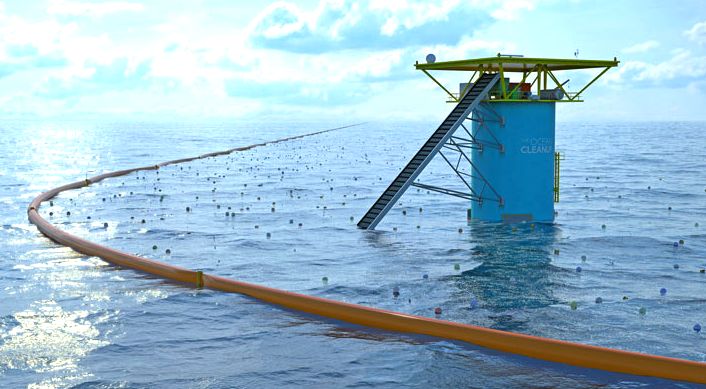
The Ocean Cleanup
project is to develop technologies to extract, prevent, and intercept plastic pollution. The Ocean Cleanup’s goal is to fuel the world’s fight against oceanic plastic pollution, by initiating the largest cleanup in history.
Small scale model tests indicated The Ocean Cleanup Boom to perform significantly better than conventional booms, while deploying a 40 m long boom near the Azores showed
that a boom can capture and concentrate plastic pollution.
CONCEPTUAL
PROJECTS - THE OCEAN CLEANUP, BOYAN SLAT
19-year-old Boyan Slat unveiled plans to create an Ocean Cleanup Array that could remove 7,250,000 tons of plastic waste from the world’s oceans. The device consists of an anchored network of floating booms and processing platforms that could be dispatched to garbage patches around the world. Instead of moving through the ocean, the array would span the radius of a garbage patch, acting as a giant funnel. The angle of the booms would force plastic in the direction of the platforms, where it would be separated from plankton, filtered and stored for recycling.
At school, Boyan Slat launched a project that analyzed the size and amount of plastic particles in the ocean’s garbage patches. His final paper went on to win several prizes, including Best Technical Design 2012 at the
Delft University of Technology. Boyan continued to develop his concept during the summer of 2012, and he revealed it several months later at TEDxDelft 2012.
At the time he was a first year Aerospace Engineering
student
Slat went on to found The Ocean Cleanup Foundation, a non-profit organization which is responsible for the development of his proposed technologies. His ingenious solution could potentially save hundreds of thousands of aquatic animals annually, and reduce pollutants (including
PCB and
DDT) from building up in the food chain. It could also save millions per year, both in clean-up costs, lost tourism and damage to marine vessels.
Together with a team of 100 people, The Ocean Cleanup commenced on an extensive feasibility study.
The team perform research in the fields of engineering, physical oceanography, ecology, finance, maritime law, processing and recycling.
It is estimated that the clean-up process would take about five years, and it could greatly increase awareness about the world’s plastic garbage patches. On his site Slat says, “One of the problems with preventive work is that there isn’t any imagery of these ‘garbage patches’, because the debris is dispersed over millions of square kilometres. By placing our arrays however, it will accumulate along the booms, making it suddenly possible to actually visualize the oceanic garbage patches. We need to stress the importance of recycling, and reducing our consumption of plastic packaging.”
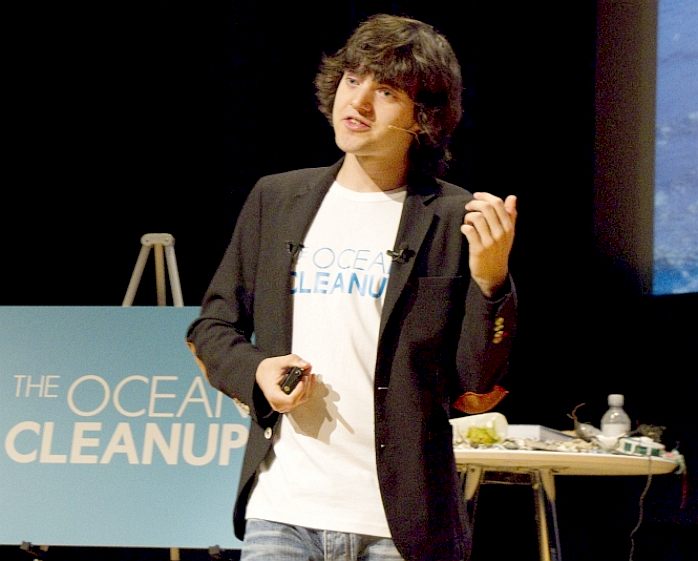
POTENTIAL USES
FOR RECOVERED PLASTIC
Once
plastic has been harvested from the ocean, these are just 3 of the
suggested sustainable solutions as to what to do with it.
1) Turning scrap plastic into structural lumber, Bedford Technology http://www.plasticboards.com
2) Turning plastic into
fuel oil: http://jbiglobal.com/
3) Gasification: Has been approved by the California EPA to burn waste materials for electricity. http://www.gasification.org/
PROGRESS
REPORTS
On June 3rd 2014, The Ocean Cleanup presented the 530-page feasibility study report (authored by 70 scientists and engineers), which indicated
that the concept is
a feasible method to clean almost half the Great Pacific Garbage Patch in just 10 years.
That would be 20 years to clean all of it - and that is 9 years longer
than the SeaNet
proposal that would use 100 robotic boats called SeaVax to do the same job.
SeaNet is though not yet a project begun. Where both concepts share
similar objectives it may be worth trial-ling both technologies side by
side.
The Ocean Cleanup project is clearly in the lead and now moves to the pilot phase, working towards a large-scale and operational
demonstrator in 3-4 years’ time. To get the funding needed to start the pilot phase, The Ocean Cleanup
has raised over 2 million dollars through crowd funding.
Impressive though that is, obviously, they need to raise significantly
more. But, well done chaps and keep going, because at the moment (Dec
2014) you are the only horse in a one horse race.
In 2012, The Ocean Cleanup Array was awarded Best Technical Design at the Delft University of
Technology. Boyan Slat has been recognized as one of the 20 Most Promising Young Entrepreneurs Worldwide (Intel EYE50), and was awarded the Sustainable Entrepreneurship Award in 2014.

DEEP
SEA NEWS, JULY 2014
PROJECT REVIEW
Originally, Deep Sea News (DSN) had decided not to engage with this project again after their earlier observations, "since being a naysayer is neither fun nor professionally rewarding."
However, DSN have decided to team up to conduct a serious technical review of the feasibility study for the following reasons:
* We believe that the popular momentum behind the Ocean Cleanup could lead to real change provided it is channeled into a workable solution.
* We believe that scientists have a duty to communicate to the public on topics that the public wants to know about. Our
education and research has been largely funded by federal and state taxpayers, and we believe that brings a responsibility to use it.
* We believe in the peer review process, both before publication and post-publication. Science is built on criticism. While peer review is by no means perfect, we have both found that a robust peer review process has greatly improved our own science. Since
crowdfunding sidesteps the formal grant review process and makes funding requests public, it is appropriate that the review be public as well.
* We have received many requests for a critical evaluation of this study. So far as we know, no other scientists have conducted a review of the full Ocean Cleanup feasibility study.
* As Mr. Slat has indicated in this post, our previous comments on this project are indeed outdated. He has also indicated that he is open to serious critiques of the feasibility study.
The reader may notice that this post has a much more serious tone than our past critique, or our usual blog posts. This is because we wish to convey that we are critiquing the Ocean Cleanup feasibility cleanup project in a formal, impersonal manner – the same way that we conduct reviews in the standard scientific peer-review process.
SUMMARY
We think that the Ocean Cleanup genuinely wants to help the ocean, and we commend them for taking our past critiques seriously. Some parts of the feasibility study are thoughtfully and carefully done, such as Chapter 3.3, Boom Capture Efficiency. However, other sections of the feasibility study are incomplete and/or inaccurate, and there is a lack of cohesion between sections. In addition, some of the conclusions presented in the executive summary are not backed up by the conclusions in the individual sections.
The feasibility study still has major technical issues that must be addressed before such as large-scale project is truly functional. The most fundamental problem is that there is an overarching use of average rather than extreme current speeds to estimate operational limits in the design process. This is a faulty assumption on which to base engineering specifications, one which propagates through many of the modeling studies used to assess both the technical and economic feasibility of this project. Another fundamental problem that has not been adequately considered is biofouling – the inevitable growth of marine life on the structure – which will change the hydrodynamics and may add considerable load to the structure. As currently designed, the moored array is under-engineered and likely to fail.
In addition, many of our original comments have not been fully addressed. While the feasibility study includes chapters on boom design, environmental impacts, bycatch, and high seas law, they are largely reviews and do not provide a framework for how the Ocean Cleanup will address these fundamental issues.
We recognize the substantial work that has gone into producing this feasibility study, and commend the Ocean Cleanup for their methodical response to past critiques. However, it is our opinion that information contained in this report has not proven that the Ocean Cleanup as currently described is feasible.
We provide detailed technical critiques of fundamental aspects of the project below. Because the full feasibility study is 528 pages long and spans many fields, this review is not comprehensive. We have focused on two main issue areas – the design of the structure, and the environmental and legal context in which the structure would be deployed.
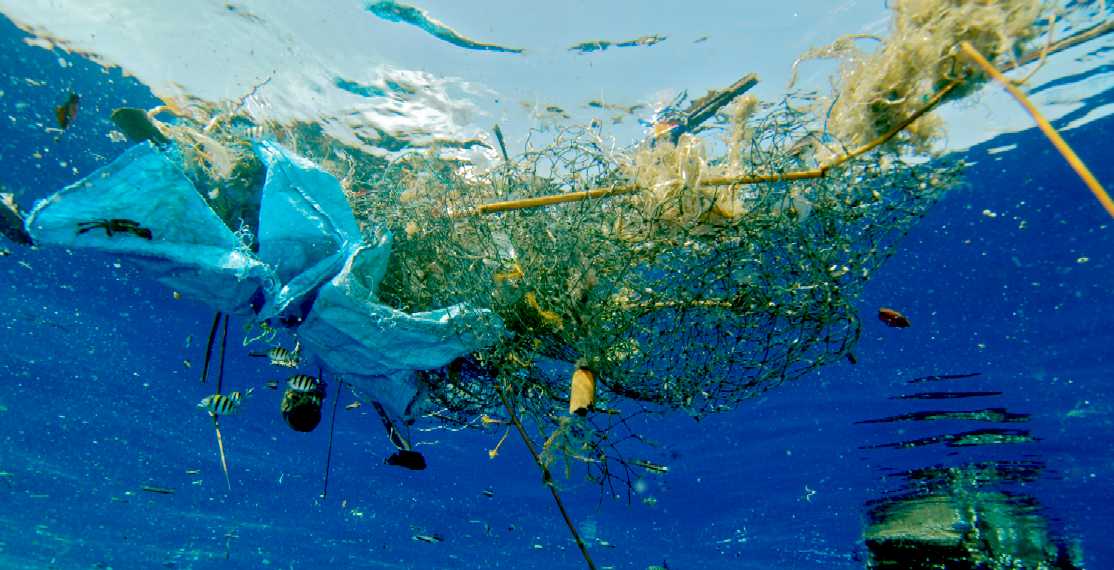
DEEP
SEA NEWS MAJOR CRITICISMS:
* The pilot study of plastic pollution upon which the array design is based was inadequate to obtain a depth profile of ocean
plastic.
* The preliminary testing and analysis of a prototype boom is incomplete and does not “validate the capture and concentration potential of a floating barrier with a skirt depth of 3 m” (p. 29).
* The modeling studies severely underestimate potential loads and tensions on the moored array and boom. Therefore, they are insufficient to properly design a mooring concept and estimate potential costs.
* No workable solution for biofouling is suggested.
* Since the authors had access to ORCAFLEX, a professional software package to design offshore marine structures, a full-scale mooring array could have been modeled to estimate loads and tensions on the moored array, but was not.
* Structural deformation of the array and loss of functionality by ocean currents are not addressed.
* The final boom presented in Section 3.6 is significantly different from the designs modeled in Section 3.3, 3.4 and 3.5. Collection efficiency calculations are likely inaccurate in light of the radical redesign.
* It is unlikely that it will take only one ship to assemble and deploy what could potentially be the largest offshore structure ever designed as estimated in the feasibility study.
*
There are several very difficult design hurdles for the processing plant that need to be overcome.
* Many of the taxa discussed in Chapter 6 (Environmental Impacts) do not actually inhabit the North Pacific Subtropical Gyre. No serious attempt is made to assess effects on the taxa most likely to be impacted.
* The legal chapter is inadequate, especially when dealing with potential bycatch of highly migratory species, which the chapter itself deems “highly likely.”
Inconsistent numbers/statements are used between sections.
Further explanations are given below.
DESIGN ISSUES
The pilot study of plastic pollution upon which the array design is based was inadequate to obtain a depth profile of ocean plastic.
The pilot study to measure the depth profile of plastic (p. 100) was conducted in the northeast Atlantic in November. It is unclear why the authors only measured plastic densities in the upper 5 meters of the water column, especially when plastic has been documented to mix below this depth (Kukulka et al. 2012), and the upper ocean structure during the survey is favorable to deep plastic mixing. There is a deep surface mixed layer that reaches down to 100 m in November (de Boyer Montégut et al. 2004), and it is known that winds are easily able to mix surface plastic throughout this layer (Kukulka et al. 2012).
The authors’ conclusion that the majority of plastic is in the upper 3 meters is invalid, since they did not sample below 5 meters. At least one sample below 5 meters should have been taken to compare plastic concentrations deeper in the water column. In addition, since the top of the multilevel trawl varied between 1-1.5 meters above the surface (page 101 and minute 1:31 in this video), we can assume the depths of the net varied by up to 0.5 meters. In this circumstance, a vertical bin resolution of 1 m can only be obtained if one assumes that the frame is completely vertical, which it likely was not.
Since plastic size is important, as the array can not extract particles smaller than 2 cm (p. 175) the authors should have also divided the samples by size.
The preliminary testing and analysis of a prototype boom is incomplete and does not “validate the capture and concentration potential of a floating barrier with a skirt depth of 3 m” (p. 29). Instead of building a larger prototype as proposed, the authors should conduct a more rigorous field test with the prototypes they have.
The preliminary testing of 40-m boom moored in 25 meter deep water is extremely problematic for four reasons:
There is insufficient data to determine whether the boom structure could capture floating plastic as the extent of their testing was watching four pieces of floating plastic thrown directly into the boom arch become captured by it, and move towards its center at an unmeasured speed, distance or duration. This can be seen at minute 2:33 in this video and is described on p. 349: “From the boat, one buoy, one bottle, one mesoplastic fragment and one
microplastic fragment were released. Visual observations of the movement of plastic particles in front of the boom were made from the boat. This plastic was later recovered by a diver, who also witnessed the plastics’ behavior from under the water.”
The boom was unable to capture plastic when currents were increased to 0.3-0.6 m/s by towing it, causing the skirt to surface (p. 353). These are current speeds the boom the array is expected to experience (Table 2.1.2). It is unclear at what current speeds the skirt worked because the current velocity was not quantified and only stated to be “moderate.”
The content in Section 7.4 Motion Observations (p. 352) is insufficient to determine how the boom will operate in real ocean conditions.
To determine impacts on zooplankton abundance, the authors anchored a zooplankton net to the side and behind the boom and skirt apparatus. However, this design does not actually measure the quantity of zooplankton entering the net. Therefore, it is not possible to quantitatively determined (nor qualitatively determined as the authors suggested on p. 29) whether there is zooplankton bycatch, since the amount of zooplankton entering vs. the amount of
zooplankton existing the net cannot be compared.
Moreover, as described on p. 351, the authors use a “visual comparison” of the zooplankton biomass to conclude that there is no zooplankton bycatch. While we do not believe that zooplankton interactions are a particular issue with this design (but see comments on the Environmental Impacts section below), simply looking at the cod ends and concluding they look more or less the same is not an adequate scientific design. We recommend that future studies use the standard metrics of displacement volume and/or dry biomass to make such a comparison. In addition, it would be helpful to determine if particular taxa (e.g., larval fishes) are vulnerable to bycatch in the apparatus.
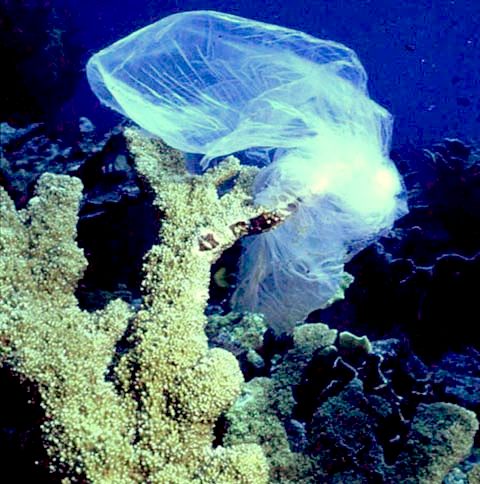
RECOMMENDATIONS FOR FURTHER TESTING:
Retest the existing boom under more realistic conditions: longer duration deployment with a trawl net attached at the center so that the capture of free-floating plastic and absence of zooplankton bycatch can be verified. This could potentially be done close to shore at relatively low cost.
Quantification of environmental variables during testing such as current speeds, plastic particle speeds and winds.
Complementary modeling and testing of the prototype skirt and boom, as the skirt weight, ballast weight and current conditions are all potentially known. From this, the accuracy of the conceptual boom model could be evaluated and will aid in further boom design.
The modeling studies severely underestimate potential loads and tensions on the moored array and boom. Therefore, they are insufficient to properly design a mooring concept and estimate potential costs.
The authors have carefully modeled the variability of the surface sea state in modeling loads due to wave action (p. 197). However, similar attention was not paid to surface current velocity. It is very troubling that mean ocean currents (p. 197, 158, 204) rather than the maximum currents are used for the majority of the modeling studies. The moored array will experience much higher currents for over 50% of its deployment (p. 124-125) and therefore may exceed the tensions and loads for which it was designed. Some attention is paid to the impact of storms on p. 302, but no solution is presented. As designed, the array could be damaged by above-average currents and may suffer complete structural failure.
We presume the skirt and ballast modeling also used the mean, although the value used is not provided (Section 3.6.3 and 3.6.5). This is a particularly important for the skirt modeling as the preliminary field tests showed that at relatively moderate current speeds (0.3 m/s, p. 353), the lateral forces on the passive particle collection skirt were too great, causing it to surface and to be unable to collect plastic.
It should be noted that smaller than average currents were used in the Boom Capture Efficiency Modeling (0.05-0.15 m/s, p. 158). Larger currents could either lead to increased efficiency because particles are transported to the central collection spar buoy faster or decreased efficiency as larger flow velocities push plastic under the skirt.
Another possible load source, windage on the area of the boom that is above water, is not considered. It is also unclear how biofouling or very large debris items such as ghost nets would impact the loads on the structure. (For more on biofouling, see Biofouling section below).
The input parameters to the OrcaFlex program could also have been more consistent with the final design. A water depth of 100 or 200 m (on p. 195 the Orcaflex model depth is 100 meters, on p. 197 depth is 200 meters) was chosen instead of 4,000 m. They also model the anchor lines tilted at 45 degrees to horizontal, when they estimate it will be at 20 degrees on p. 228. The boom design also changed significantly in Chapter 3.6, Boom Concept Refinement. While these changes were done to save computational time, it is unclear how the estimated tensions will scale up to a full-sized array and the authors’ statement that they “assume” it will is not reassuring.
To determine open-ocean feasibility, OrcaFlex should be parameterized using open-ocean values, such as realistic depths and extreme (winter storm) conditions.
No workable solution for biofouling is suggested. (Section 5.3, p. 294).
The main conclusion of the biofouling chapter is that mechanical cleaning is too expensive, which indicates the only solution is the use of a biocide to kill biological growth. However, even with the biocidal coating, the array will certainly become fouled. Even non-stationary platforms such as gliders become fouled, despite using coatings, and the
North Pacific Subtropical Gyre is home to a robust rafting community (e.g., Goldstein et al. 2014). The report states that biocidal antifoulants last for 5 years at best before the structure has to be hauled out, cleaned, and repainted (p. 299), but the Ocean Cleanup structure is intended to be deployed for 10 years (p. 144). Essentially, the biofouling chapter in the feasibility report states that they do not yet have a feasible plan to control biofouling on such a large, remote, stationary structure.
There is also no estimate for increased drag caused by biofouling. On p. 296, the report states, “One of the largest problems presented by fouling on a floating structure is that of increased weight. The structure will be designed to sit at an optimal position on the surface. But if the weight is significantly increased, it could float below the surface or even sink entirely. As the Array’s booms are estimated to be tens to hundreds of kilometers in length, the potential for fouling weight problems is substantial. Under optimal conditions the mass of biofouling can reach tens to hundreds of kilograms per square meter. The conditions in the open ocean are far from optimal, but this value may serve as a useful worst case scenario for designers.” While the oligotrophic North Pacific Subtropical
Gyre is relatively unproductive, substantial fouling communities do develop (e.g, the buoy in this photo), and the surface current velocity of 0.15 m/s assumed in the report is close to the optimal conditions for maximum fouling biomass. “Of course, all marine fouling assemblages are different and exist in different oceanographic conditions, but a general estimate is that the critical current velocity for many species to reach their maximum biomass is 0.2 to 0.5 meters per second.” (p. 298).
Not only will ignoring the effects of biofouling lead to egregious underestimates of structural loads and tensions, but it could also render the careful hydrodynamic calculations presented in the report irrelevant. A well-developed fouling community has a high likelihood of altering the “fluid and particle flow perpendicular to the boom sections” (p. 176) upon which the plastic capture design depends.
Since substantial biofouling is a virtual certainty, the Ocean Cleanup cannot be said to be feasible unless it develops a realistic plan to address this fundamental ocean deployment issue.
Since the authors had access to ORCAFLEX, a professional software package to design offshore marine structures, a full-scale mooring array could have been modeled to estimate loads and tensions on the moored array, but was not.
It is also unclear where they got a tension of 3600 kN for the mooring design load as stated on p. 229.
Structural deformation of the array and loss of functionality by ocean currents are not addressed.
As stated by the authors on p. 197, the boom is unable to collect plastic if the currents are not directly perpendicular to the array. “As a result of acquired environmental data, presented in Chapter 2, the input for current speed was set at 0.15 m/s and it was directed perpendicular to the boom. The perpendicular direction is an operational requirement to collect the plastic.”
Even in the best case scenario, assuming that plastic can be collected when the currents are within 90 degrees of the optimal southwest direction, currents that push plastic into the array only occur 46% of the time (Table 2.1.2). The authors have not considered what would happen to the array if the currents reversed completely, coming from the northeast. Not only would the array be seriously deformed, but plastic that has already been captured by the boom (before reaching the processing plant) could be released back into the Garbage Patch. Increased loads due to horizontal current shear and eddies are not considered.
The final boom presented in Section 3.6 is significantly different from the designs modeled in Section 3.3, 3.4 and 3.5. Collection efficiency calculations are likely inaccurate in light of the radical redesign.
The modeled design has a freely hanging, ballasted skirt that is pushed downstream of the boom, while the final design has a tensioned skirt that creates a “scoop.” While we appreciate adaptive design, the substantial changes to the structure in the new design means that most of the modeling and pilot studies presented in the report are no longer relevant. We cannot assess the feasibility of the new design because no data are presented.
It is unlikely that it will take only one ship to assemble and deploy what could potentially be the largest offshore structure ever designed as estimated in the feasibility study (Chapter 5.1).
Compared to traditional oceanographic moorings, the design of the array is quite complicated. There are multiple cables with multiple connection points. The authors have come up with an interesting plan to deploy the cables with flotation, so that the connections can be made at the surface and later tensioned to the desired depth. However, this design is also potentially very dangerous as these floating cables are not stationary and could become entangled with the deployment ship propellor while making these connections. While more expensive, it would be more sensible to use more than one ship to minimize stray lines that could foul ship propulsion during the array deployment.
There are several very difficult design hurdles for the processing plant that need to be overcome.
The authors have chosen a spar buoy design for the processing plant, which has a deep draft making it a very stable platform (Chapter 4.3). However, spar buoys are very difficult to deploy because the loads and tensions on them are extremely large, so they are rarely, if ever, deployed in
water greater than 2,500 meters deep.
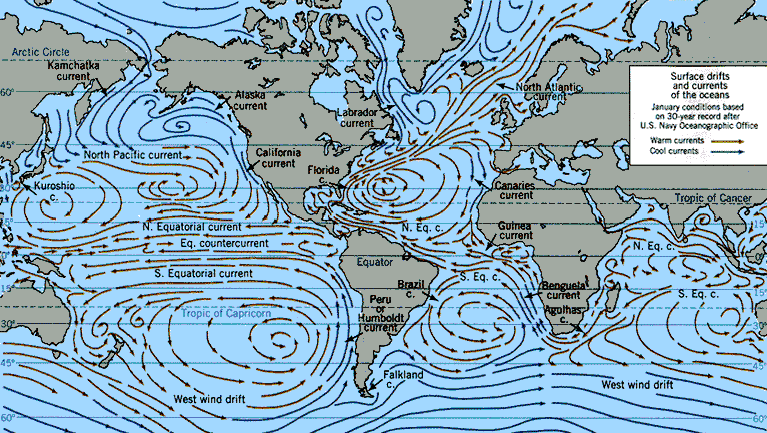
ENVIRONMENTAL ISSUES
Many of the taxa discussed in Chapter 6 (Environmental Impacts) do not actually inhabit the North Pacific Subtropical Gyre (NPSG). No serious attempt is made to assess effects on the taxa most likely to be impacted.
In the zooplankton chapter (p. 318), the authors seem unaware that the NPSG is a subtropical, oligotrophic ecosystem with a distinctive neustonic community. Substantial space is given to a discussion of the spring bloom, which is important in the temperate and boreal North Pacific, but not the subtropics where the array will be located. (They reference Cooney 1986 which took place in the northern Gulf of Alaska, a very different ecosystem than the NPSG.) None of the species mentioned in the Zooplankton Diversity section (p. 320) actually inhabit the NPSG. No attention is given to the specialized community that inhabits the air-sea interface (the “pleuston”) in the subtropics (Cheng 1975). Since these taxa (e.g., the drifting chondrophores Velella & Porpita) are obligate inhabitants of the surface layer, they would almost certainly be subject to substantial bycatch and mortality in the Ocean Cleanup plastic collection mechanism.
In the Vertebrate chapter (p. 326), there is no attempt to determine what vertebrates actually inhabit the NPSG. This is reasonably well known thanks to fisheries data and projects such as the Tagging of Pacific Predators study. In particular, commercially important fishes that are known to be drawn to offshore structures, such as tuna and mahi mahi, should have been discussed.
Bycatch is acknowledged to be a problem – “Vertebrates present close to the platform pose the biggest problem. Here, they run the risk of injury or death from the moving parts of the conveyer belt or the slurry pump.” (p 327). Solutions that work in
fishing nets (Turtles Excluder Devices) and longlines (pingers) are briefly mentioned, but there is no descriptions of how they would prevent bycatch in the context of NPSG ecology or the Ocean Cleanup’s design. To give one example, sperm whales are known to inhabit the NPSG, but their response to pingers is unknown.
Given the vast and unprecedented size of the Ocean Cleanup array, serious thought must be given to what impacts it might have on protected or commercially important species. More vulnerable taxa (e.g., fishes, turtles, marine mammals) should be given more attention than less vulnerable taxa (e.g., phytoplankton).
The legal chapter is inadequate, especially when dealing with potential bycatch of highly migratory species, which the chapter itself deems “highly likely.”
This section is simply a summary of the current maritime laws. There is no plan for how the Ocean Cleanup will engage with the regulatory process, or monitor catch of protected species as required by international treaties. In the executive summary, the authors indicate that “With regard to vertebrates, harm caused by the barriers seems unlikely because non-permeable barriers are used, although some bycatch may occur in the near vicinity of the platform’s extraction equipment (p. 29).” This statement is directly at odds with the following assessment on p. 378, “Highly migratory species will be highly affected by this project.
Swordfish, marlin, sailfish,
sharks,
tuna-like species are all highly susceptible to being caught in the holding tanks, and possibility diverted by the booms into the platform.” Moreover, the bycatch mitigation methods discussed in the Environmental Impacts section (p. 329) are either not applicable to fishes (pingers and TEDs) or to the Ocean Clean design (changes in bait and hook design and deployment).
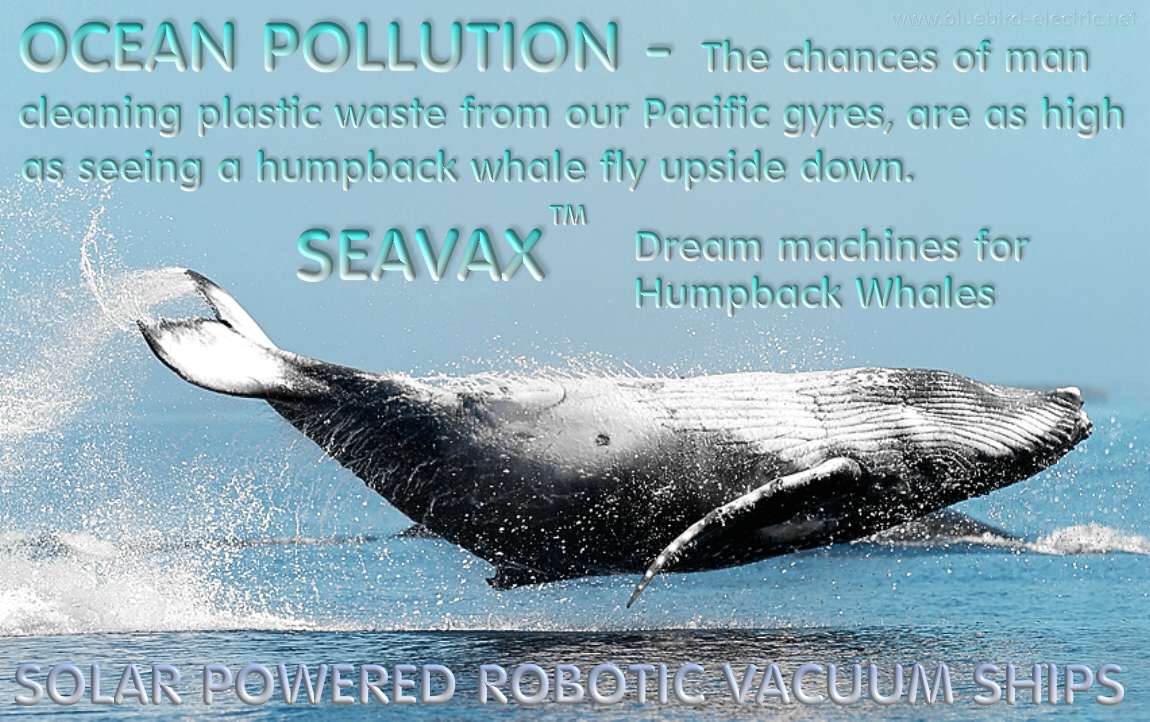
THE BOARD
Boyan Slat
Founder & President
Ir. Frans Ratelband MSc
Secretary
Femke Hoes
Treasurer & Bookkeeper
Management
Boyan Slat
Founder & President
Femke Hoes
Head of Office
Jan de Sonneville PhD
Lead engineer
FEASIBILITY STUDY COORDINATORS
Bernd van Dijk MSc
Financials coordinator
Julia Reisser MSc
Lead oceanographer
Ir. Leonid Pavlov MSc
CFD & CM coordinator
Nicholas P. Katsepontes BA LLB LLM
Maritime & Environmental law coordinator
Norbert Fraunholcz PhD
Processing & Recycling coordinator
Robbert Zuijderwijk BSc
Ecology coordinator
FINANCE AND FUNDING
Arthur van de Graaf
Crowdfunding coordinator
Dario Grassini CPA
Financials
CONTACTS
The Ocean Cleanup
Stevinweg 1
2628 CN Delft
The Netherlands
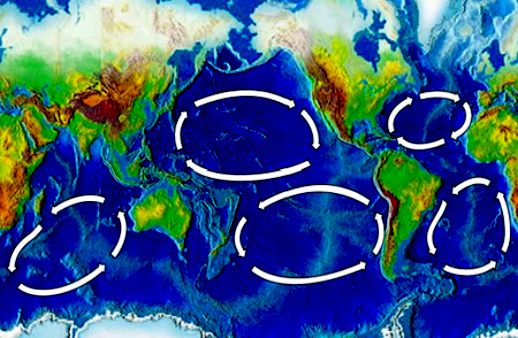
Millions of tons of trash enter the ocean each year and cluster in particular areas of the world’s oceans. One of the most infamous plastic debris patches is located in the North Pacific Subtropical Gyre, commonly referred to as the Great Pacific Garbage Patch (GPGP).
This piece of “plastic soup” is twice the size of Texas and contains six times more plastic than plankton biomass.
ACIDIFICATION
- ADRIATIC
- ARCTIC
- ATLANTIC - BALTIC
- BERING
- CARIBBEAN - CORAL - EAST
CHINA
ENGLISH CH
-
GOC - GULF
MEXICO
- INDIAN
-
IRC - MEDITERRANEAN -
NORTH SEA - PACIFIC
- PERSIAN GULF - SEA
JAPAN
STH
CHINA - PLASTIC
- PLANKTON - PLASTIC
OCEANS - SEA
LEVEL RISE - UNCLOS
- UNEP
WOC
- WWF
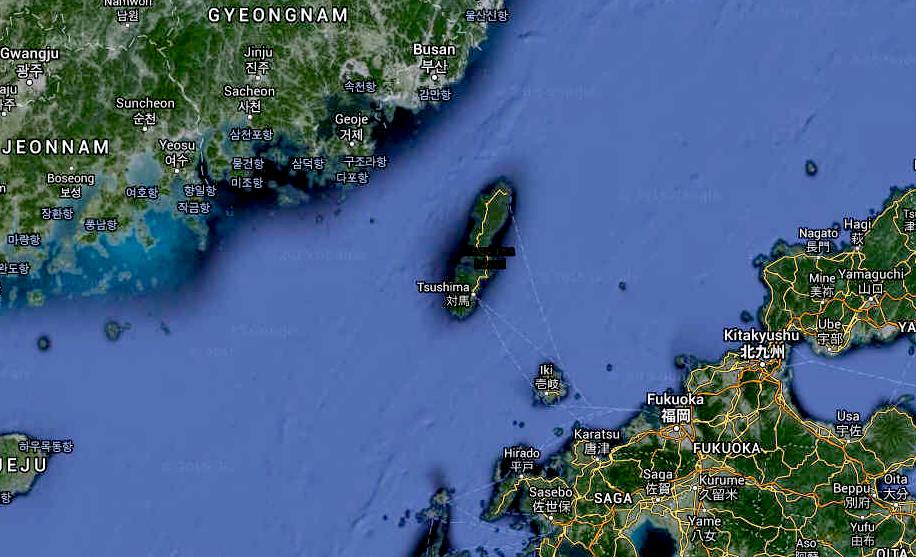
TSUSHIMA
ISLAND, KOREA STRAIT - The Ocean Cleanup Array pilot will feature floating booms spanning some 2000 meters (1.2 miles) across the surface of the water, which would be "the longest floating structure ever deployed in the ocean," according to the project website. Assuming all goes according to plan, and the array is able to effectively extract floating ocean plastic during the pilot project, the organization plans to deploy a "62-mile-long array that will be capable of capturing about half of the trash in the Great Pacific Garbage Patch" over the course of a decade, according to Al Jazeera.

Inhabitat
19 year old student develops cleanup array to remove 7250000 tons
plastic-from worlds oceans
The
mind unleashed author Tmuorg Sea
Plex Science Abundant
Seas
Plastic
Boards
JBI Global
Gasification
Gyre
clean up plan
5
Gyres - Understanding Plastic Marine Pollution
Wind
Driven Surface Currents: Gyres
SIO
210: Introduction to Physical Oceanography - Global circulation
SIO
210: Introduction to Physical Oceanography - Wind-forced circulation notes
SIO
210: Introduction to Physical Oceanography - Lecture 6
Physical
Geography - Surface and Subsurface Ocean Currents
North
Pacific Gyre Oscillation — Georgia Institute of Technology
Education
National Geographic ocean gyre
Great
Recovery EPSRC Wikipedia
Marine_debris National
Geographic 2014 July ocean-plastic-debris-trash-pacific-garbage-patch Plastic
Soup News Blogspot 2014_July Paris
Match Environnement Boyan Slat le sauveur des oceans Deep
sea news 2014 July the ocean cleanup part 2 technical review of the
feasibility study http://deepseanews.com/2014/07/the-ocean-cleanup-part-2-technical-review-of-the-feasibility-study/ http://www.parismatch.com/Actu/Environnement-et-sciences/Boyan-Slat-le-sauveur-des-oceans-567531 http://www.plasticoceans.net/the-foundation/ http://www.greatrecovery.org.uk/
http://seaplexscience.com/
http://abundantseas.org/
http://www.gyrecleanup.org/cleanup-plan/ http://education.nationalgeographic.co.uk/education/encyclopedia/ocean-gyre/?ar_a=1
http://www.plasticboards.com
http://jbiglobal.com/
http://www.gasification.org/
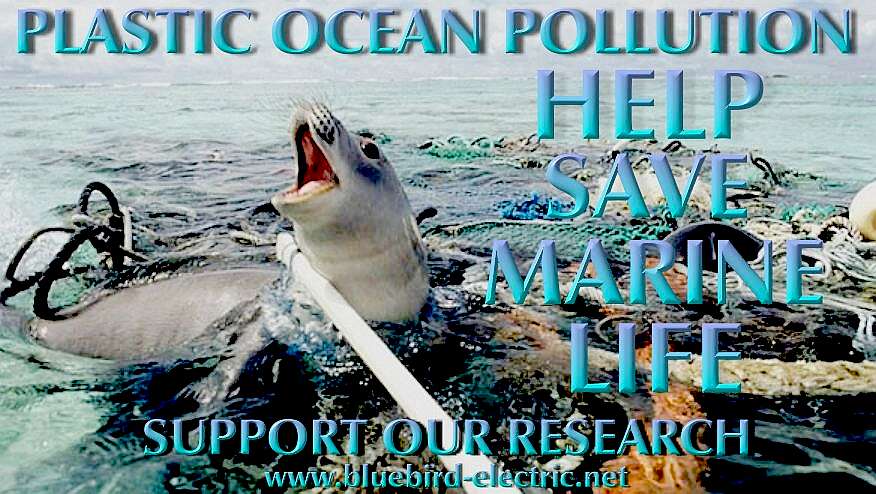
SEAVOLUTION - A non-polluting vessel such as the Bluefish ZCC concept
could be an ideal base machine when it comes to filtering garbage from the world's ocean
gyres. Several of these cleaners operating as Atlantic, Indian and Pacific
ocean fleets could make such
conservation measures cost effective, and even potentially attractive to
governments around the world - for the health of the world. Recovered
plastic could be processed to produce oil, energy or recycled products.
Better than letting fish and seabirds eat the waste and kill themselves, and
who knows how that may affect us, where seafood is an essential resource for
mankind. Click on the picture above to read more >>>>>>
|








